Nursing: Memories of a matron who met Royalty as she worked from 1950 to 1988 at Sheffield Children's Hospital
and live on Freeview channel 276
Miss Laycock contacted The Star after seeing Retro pictures of the hospital from the years when she worked there. We’re talking from 1950 to 1988, a working life, but she actually started off not wanting to be a nurse.
Born in Great Houghton, Barnsley, she still lives in the house she grew up in. Her mum was a housewife and her dad was a driver for Yorkshire Traction.
Advertisement
Hide AdAdvertisement
Hide AdShe had three brothers and a sister, going to school first in her home village and then at Darfield Foulstone, which she left aged 14.
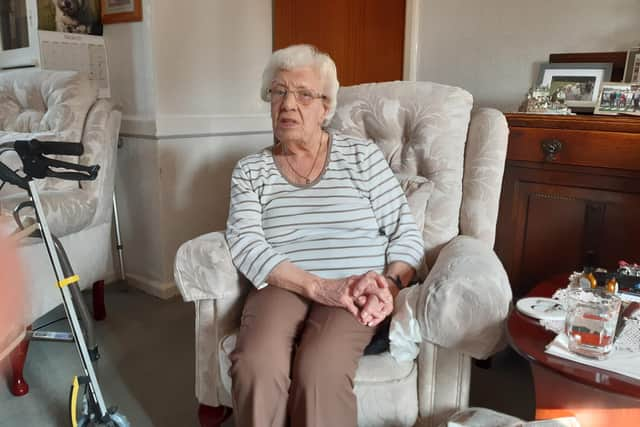

“My ambition was to go into the police force. I always had a feeling for interfering!” she said.
“I read in mum’s newspaper that they were looking for police cadets so I went to Wombwell station and asked if I could have a form to fill in. A burly policeman told me to come back if I grew; because in those days you had to be a certain height.
“I wondered what I would do. I had always loved children so I applied to be a nursery nurse, and started training in Barking in Essex from 1947-9.
Advertisement
Hide AdAdvertisement
Hide Ad“The soldiers were coming home, being demobbed so it was not the same for nursery nurses as when women were in the munitions factories.
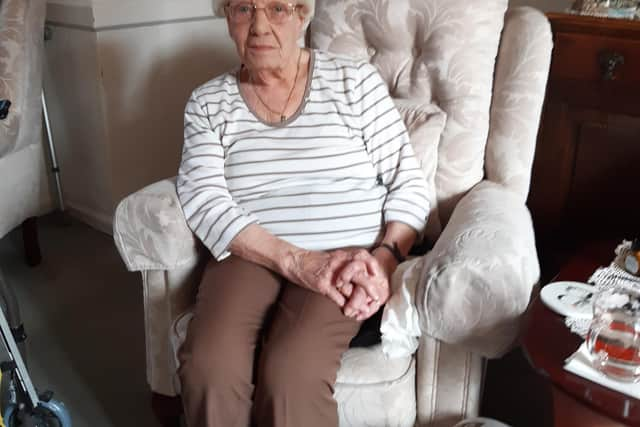

“I didn’t want to go into private care. Fortunately, the matron at a nursery I worked with had been at the Sheffield Children’s Hospital and recommended it. I applied and got a place.”
It was September 1950 when she arrived to begin her training at the Sheffield School of Nursing on Clarkehouse Road.
“It was wonderful. Not all of the time, but very happy days. I'm so pleased I trained then,” she added.
Advertisement
Hide AdAdvertisement
Hide Ad“We did 13 weeks and one day a week was at the Children’s on a ward, being chaperoned by a more senior nurse. You got an insight into what happened.
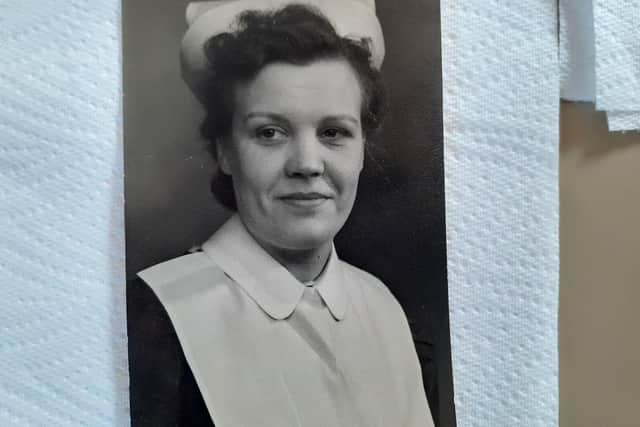

“You weren’t allowed to do much except make beds but it gave you an idea of what you were going to be doing. I was fascinated.
“At the end of the 13 weeks we took an exam and I passed.”
The hospital was a very different place to the 2022 version. The operating theatres and outpatients were in one building. Accident and emergency was on the lower ground floor. Parts of the hospital Barbara worked in have now been demolished.
But she is delighted to see the hospital grow and grow.
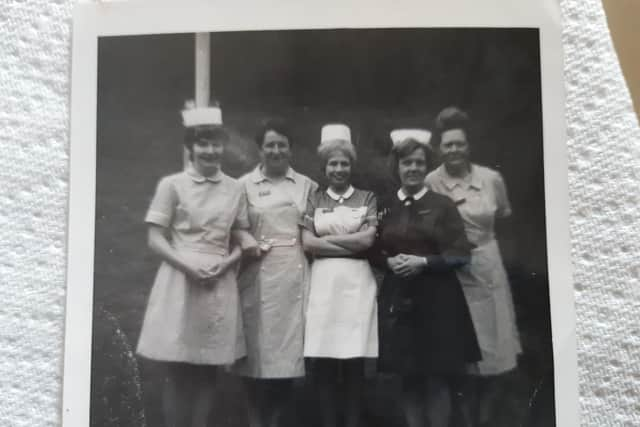

“I’m thrilled with the progress. When I look back it makes me wonder how we coped,” said Miss Laycock.
Advertisement
Hide AdAdvertisement
Hide Ad“Times change, people change and life changes. But the word nurse still means to tend and care and I feel that’s important.
“In the present day, going to university and getting a degree in nursing is not what nursing is about. People will disagree with me but I think it is about nursing, bedside nursing caring for the patient in the bed and the family by their side.
“You can’t learn that from a book.
“But nobody could be more proud than me of how the hospital has extended and the people there carry on all the things we began.
“It had a world class reputation when I was there and I can remember all those professors and doctors coming from all around the country.
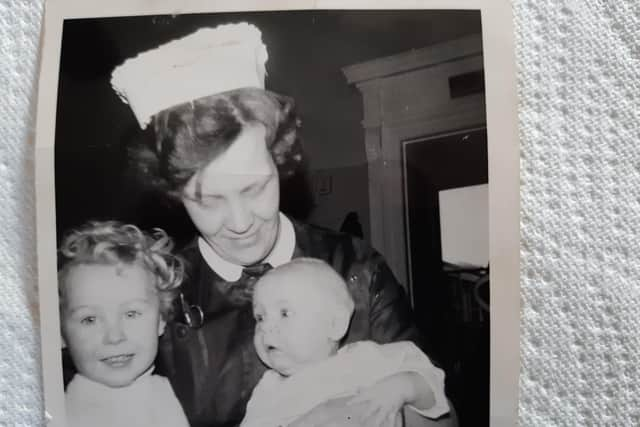

Advertisement
Hide AdAdvertisement
Hide Ad“I had to chaperone them around the ward, telling them about the patients so they could continue their discussions. There were doctors from around the world.”
The oncology ward has her special interest.
“As Senior Nurse responsible for that area, and part of a very enthusiastic team, we were always looking for ways to improve and relieve the anxieties of patients, parents and their families,” she recalled.
“I could see some patients didn’t like having to keep coming back to the ward because it had been a traumatic experience with memories of how they felt.
“I went into the pathology department and asked for a spare room to set up a clinic so patients didn’t have to go into the ward unless they wanted to.
Advertisement
Hide AdAdvertisement
Hide Ad“We took bloods in the room, it meant there was a different environment because to a child a hospital environment can be frightening. Some take to it like a duck to water but for others it can be an anxious time so we tried to take the anxiety away.”
Barbara didn’t always agree with what went on at the hospital.
“I remember being given an alarm and if you were wanted it would go off so you could be found anywhere. You then had to phone in,” she said.
“I told my mum and she said progress isn’t always for the best and how right she was. I pick up a phone and get a voice saying press this for this and that for that but you never actually get what you want which is to speak to someone. I’m old fashioned.
Advertisement
Hide AdAdvertisement
Hide Ad“But the medical progress is different. The wards are delightful as is what the surgeons can do.
“I loved my time there but the improvements to the buildings and the environment for children and their parents is great to see.”
Visiting times have also improved.
“In the 1950s and 60s, visiting was once a week and it was quite a forbidding place,” Miss Laycock recalled.
“It was an hour on a Sunday afternoon and we would spend the rest of the week calming down the children until next week.
Advertisement
Hide AdAdvertisement
Hide Ad“Then it was decided it would be every evening for half an hour. I didn’t agree, half an hour was no time.”
It was also a time when ward cleaners ruled the roost.
“The cleaners were as proud of the ward as we were. They used to remonstrate with us - ‘Watch where you walk, I’ve just done that’,” she remembered.
Her highlights include a visit to the hospital by Princes Margaret in 1983 when she was presented to the Queen’s sister. She hasn’t got the picture of the moment they met.
“If you saw it you would scream laughing. My hand looks like a wet cod. It wasn’t intended, I was very nervous,” she recalled.
Advertisement
Hide AdAdvertisement
Hide AdBarbara was also invited to Buckingham Palace for a garden party.
“The food was beautiful and the furnishings were glorious,” she said.
“I was honoured and privileged to do that. I was allowed out at the front gate. It was like everyone was looking at me and had come to see me come out.”
So how does she view her time there now?
“I loved it,” she says, smiling.
“It wasn’t all beer and skittles, because I was in a community of all women and some could be backstabbing each other.
Advertisement
Hide AdAdvertisement
Hide Ad“I was firm but fair and as Senior Nurse always tried to treat people the way I wanted to be treated, but I had my moments.
“I’d like the hospital to be the best it can and I’m still in touch with a few people I worked with.”
She retired in 1988, aged 58 and didn’t miss it at first.
“I got further and further away from the patients because of the promotions. As matron I had to go to meetings and I wasn’t built for that,” she admitted.
She did four months in the post.
“It was an experience, but wasn’t what I was trained for.”
She held other top posts. Senior nurse, sister and nursing officer. Barbara liked being where the patients were.
Advertisement
Hide AdAdvertisement
Hide Ad“As a nursing officer, I could stick my nose in and they used to ring me and say ‘come here and sort it out’,” Miss Laycock added.
Sometimes she couldn’t.
“One of the hardest times was when the student nurses were taken off the wards. They weren’t replaced so we were begging from one ward to help another, which was robbing Peter to pay Paul,” she recalled.
“We were running around like headless chickens and then got agency staff which cost the earth.”
But those memories pale in comparison to her 38 years service.
Advertisement
Hide AdAdvertisement
Hide Ad“It is with pride and nostalgia I follow the continuous progress of the Children's Hospital through The Star,” she said.
“It is very close to my heart.
“I'm now in my 92nd year and still look forward to The Star's informative progress of the Sheffield Children's Hospital and the generosity of people with time and money giving to, in my opinion, the best children's hospital in the UK.”
The hospital remembers her too.
Professor Sally Shearer, executive director of nursing and quality and acting deputy chief executive at Sheffield Children’s NHS Foundation Trust, said: “To work in one place for 38 years shows wonderful dedication and that’s exactly what Barbara demonstrated during her long career at Sheffield Children’s Hospital.
“We thank her for her care and commitment to the children and families of Sheffield and beyond.
Advertisement
Hide AdAdvertisement
Hide Ad“We continue to expand our current buildings and clinical services, always putting children and their families at the heart of everything we do. I’m sure Barbara, with her long experience in haematology and oncology, would be delighted by our new Ward 6 which opened last December.”
Dr Dan Yeomanson, consultant paediatric oncologist at Sheffield Children’s Hospital, added: “When I asked some of our longest serving members of staff, they remembered Barbara immediately as a formidable matron, with extremely high standards, who made sure that all patients received exemplary nursing care. That is quite a legacy.”
